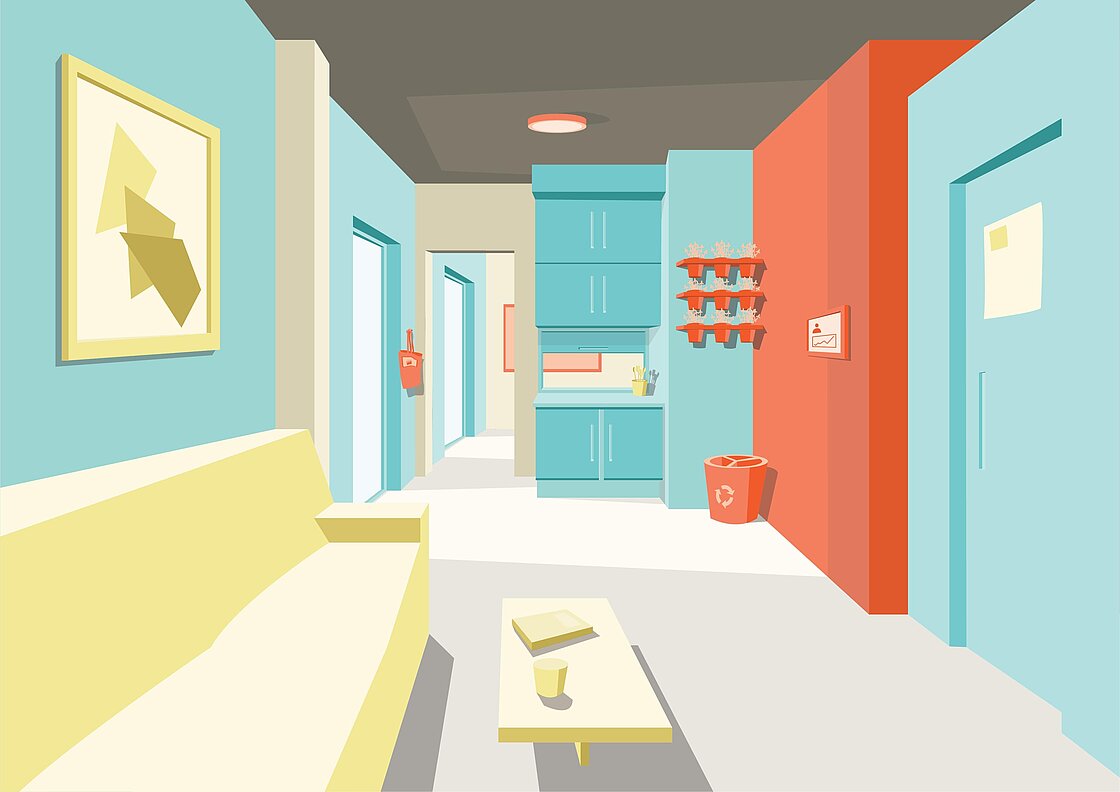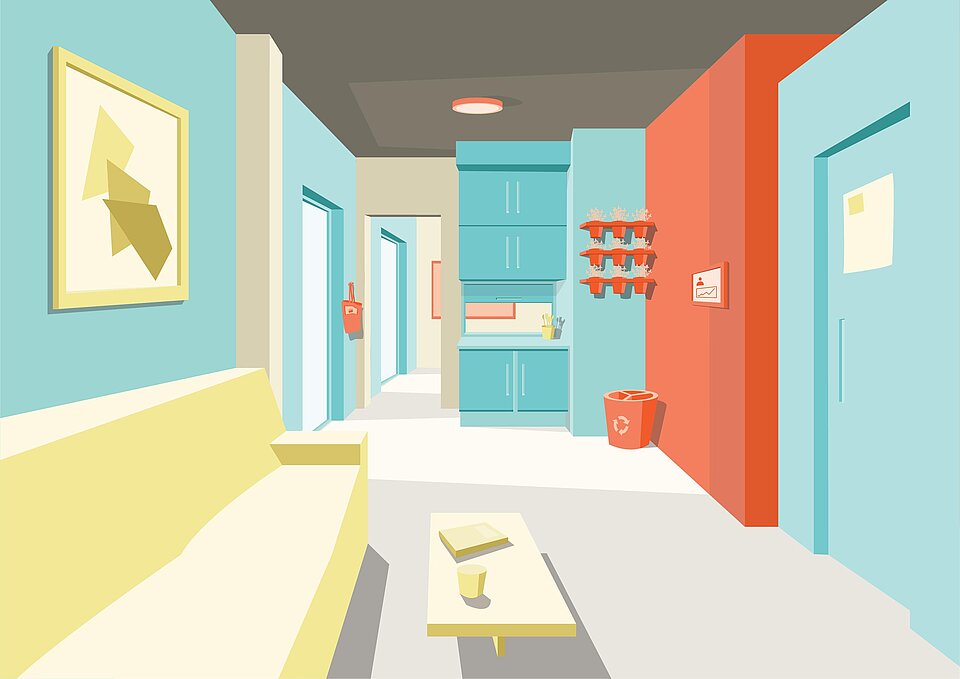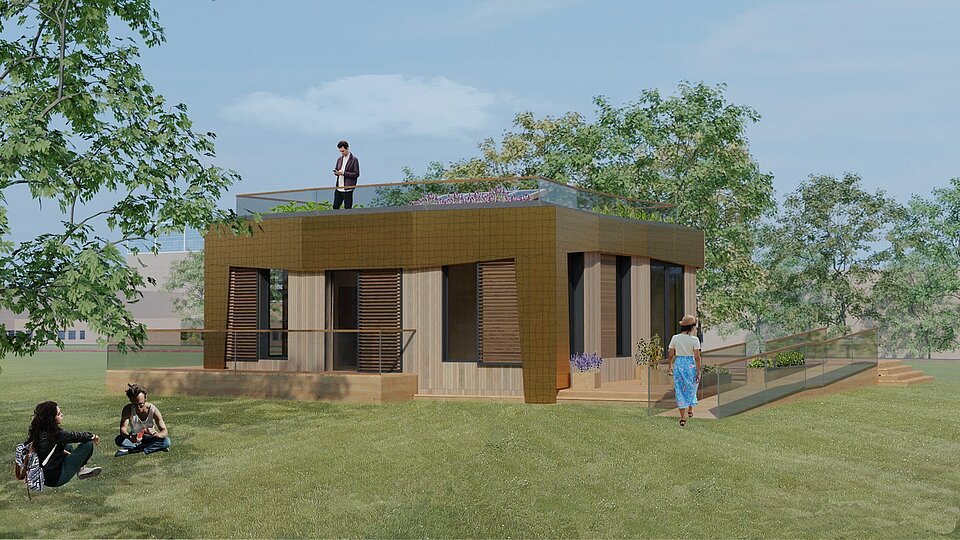New housing concept inspires people to live more sustainably

VIRTU/e student team is designing the neighborhood of the future. The technology for sustainable homes already exists, now all that remains is the social aspect.
There are innumerable ways to live more sustainably. From taking shorter showers and eating plant-based food more often, to installing a heat pump and solar panels. “The challenge is not to build a house that is completely self-reliant in terms of energy – that is already possible. The challenge lies in bringing these technologies and people together,” says Willem Arts, spokesperson for the VIRTU/e student team. “Only when people actually start using these technologies, will we ever achieve the intended result: A sustainable lifestyle.” For the Solar Decathlon, the team came up with a concept for a sustainable neighbourhood where people, rather than technology, are central.
VIRTU/e, a student team from Eindhoven University of Technology (TU/e) in the Netherlands, will be taking part in the Solar Decathlon in 2022. Eighteen student teams will be competing against each other in this competition. They will all build a sustainable house using solar energy that will be judged by an independent jury. The competition is to be held next year in Wuppertal, Germany. Research carried out by the students from Eindhoven revealed that a lot of people feel confronted with a barrier where sustainable living is concerned. Many think that their own household will not be able to make any difference and that companies and governments need to work towards sustainability. “We believe that small contributions do make a difference. Which is why we want to motivate people to start living more sustainably,” Arts points out.
Flexible house
For the Solar Decathlon, the students from Eindhoven came up with a concept for a sustainable neighbourhood which they have named Ripple. The housing concept aims to inspire people to keep on spreading sustainable living ever further, like circles rippling around a drop of water. The new district brings together existing technologies. They aim to build flats that can be adapted to the preferences of people in a neighbourhood, for instance, in terms of living space and layout. The core of each home is a machine room containing, e.g. heat pump equipment. Spaces such as the kitchen, living room and bedrooms can be built around it.
The entire complex will be built on top of existing buildings, such as shops. “A lot of buildings have a flat roof. This makes it possible to add a few floors on top. Although we will first have to check whether the current foundations are capable of doing that,” he explains. Building on existing premises is better for the environment. No new land is needed. It is also quicker, because no foundations have to be laid, to name one thing. It also saves on materials. Greenery will be planted on the roof to preserve biodiversity.


Communal areas
The adaptable system that VIRTU/e is working with allows the students to easily add communal areas to the complex. These communal areas are very important for the social aspect of the neighbourhood. “People are often inspired by their surroundings to start living more sustainably. We hope to bring people together more often by creating communal spaces,” he says. Not just in the buildings either, there is also space outside for getting together with neighbourhood residents.
Mobility and more
What are known as mobility hubs play an important role here. There will be various places for shared cars, scooters and bicycles in the neighbourhood. The parcel delivery service will deliver packages here so that they do not have to drive to everyone’s address, which in turn will cut down on the number of kilometers travelled and therefore also on emissions. The hub building also has space for storing sustainably generated energy. These hubs have a social function as well. Room is made for a communal garden on the roof. That space can also be used to throw a party or a barbecue on a hot summer’s day.
Use
From an architectural and practical point of view, the neighbourhood is fully equipped for sustainable living. “However, people do have to use it in the right way,” says Arts. Which is a challenge, for example, where energy consumption is concerned. Most sustainable energy is generated during the day, but households tend top use the most energy n the evenings. Generated energy can be stored, but a small amount will always be lost as a result. “Therefore, it would be better if people use more energy during the day, for instance by running the dishwasher and washing machine during the day,” he explains. The students want to make this easier by having household appliances communicate with each other and with the user. This way, the appliances can run at convenient times, whenever there is plenty of energy available.
Moreover, residents need to be encouraged to actually use this technology. The students have developed an app for this purpose. “People often share how many steps they have walked. We want to create the same sort of effect with sustainable living,” the student explains. Users can keep track of how sustainably they are living via the app and share that with others if they want to. “This serves as a source of motivation for the users themselves and they also help inspire others to live more sustainably by doing this.”
Test house
The students will build a demonstration house on the TU/e campus over the coming summer. This house will contain two flats and a communal area. This is a try-out for the building they will build in Wuppertal next year. The first house will be built with materials from the pavilion, a recently demolished building on the campus, as well as from other sources. “With this, we want to show that it really is feasible to build sustainably,” Arts adds. “But our main goal is to inspire people to live more sustainably.”

